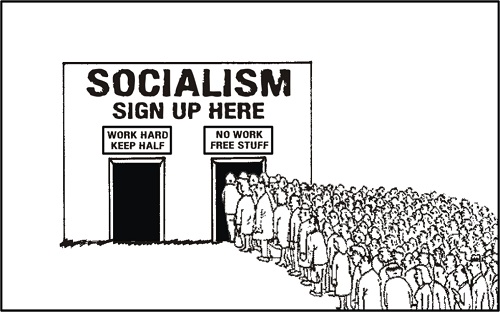Incentives matter.
Sometimes that can be explained with wonky discussions of marginal tax rates orwelfare traps.
But that may not be the best approach when trying to convince someone with no aptitude for economics. So what’s the best way of introducing such concepts to, say, a Bernie Sanders supporter?
 You can point to the economic chaos in places such as Greece and Venezuela and explain that Margaret Thatcher was right when she warned that socialists eventually run out of other people’s money.
You can point to the economic chaos in places such as Greece and Venezuela and explain that Margaret Thatcher was right when she warned that socialists eventually run out of other people’s money.
But that’s probably not too effective because they’ll simply point to Sweden and Denmark and you’ll have a hard time educating them that those countries became successful when government was small and that they’ve been falling behind ever since big welfare states were imposed.
So perhaps we first need to help them understand very simple notions.
That’s why, when trying to introduce basic concepts, I’ll often share clever images and cartoons.
- The Wizard-of-Id parody about work incentives.
- The philoso-raptor contemplating supply-side economics.
- Lessons about double taxation and harvesting apples.
- Showing looters are the enemy, not rich people.
- The size of the pizza is more important than how it’s sliced.
Here’s a great addition to that collection (h/t: Zero Hedge). It basically shows why redistributionism is doomed to failure because a lot of people inevitably will decide that life is easier when you’re a consumer rather than a producer.

Definitely worth sharing, I hope you’ll agree.
I view this cartoon as being very similar to the second frame of the famous riding-in-the-wagon cartoons I first posted back in 2011.
Which gives me an opportunity to end today’s column with a very serious point. When redistribution programs are first created, politicians generally argue that they make sense because a lot of people will pay very small amounts to help a handful of folks who are genuinely needy.
That sounds compassionate and affordable. And perhaps it is, but there are two reasons why programs that sound reasonable in the beginning eventually morph into modern welfare states.
- Politicians figure out they can buy votes by making the wagon more comfortable and attractive (i.e., public choice economics).
- A growing number of people figure out that it’s better to ride in the wagon rather than pull the wagon (i.e., erosion of social capital).
And when you combine these two factors with changing demographics, it’s easy to understand why the future is so grim for so many countries.

